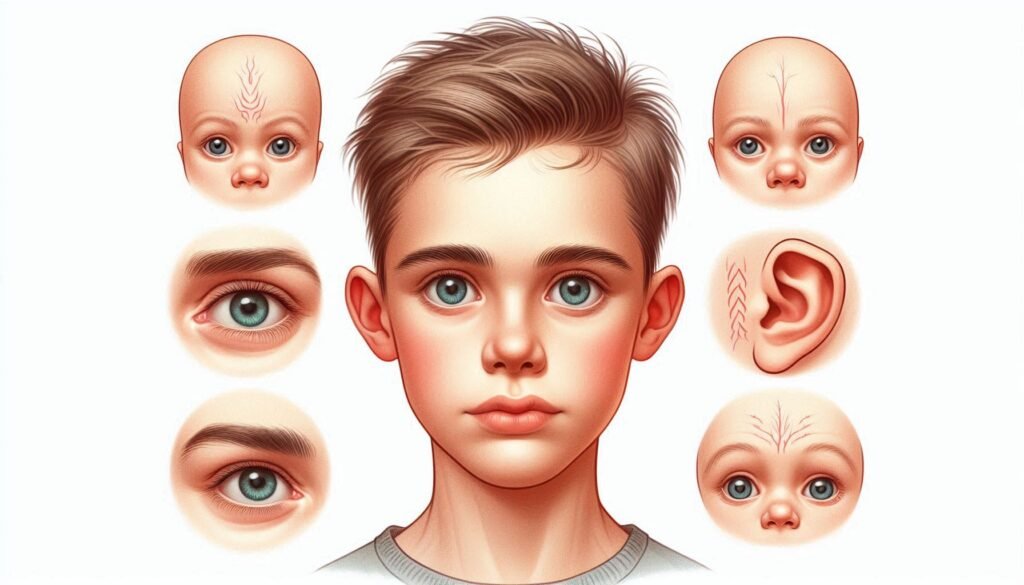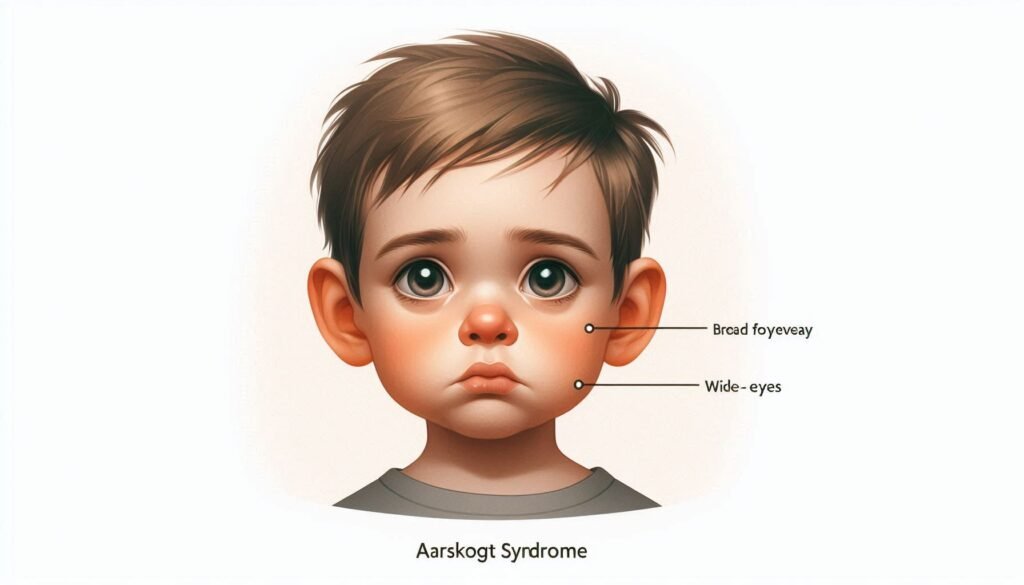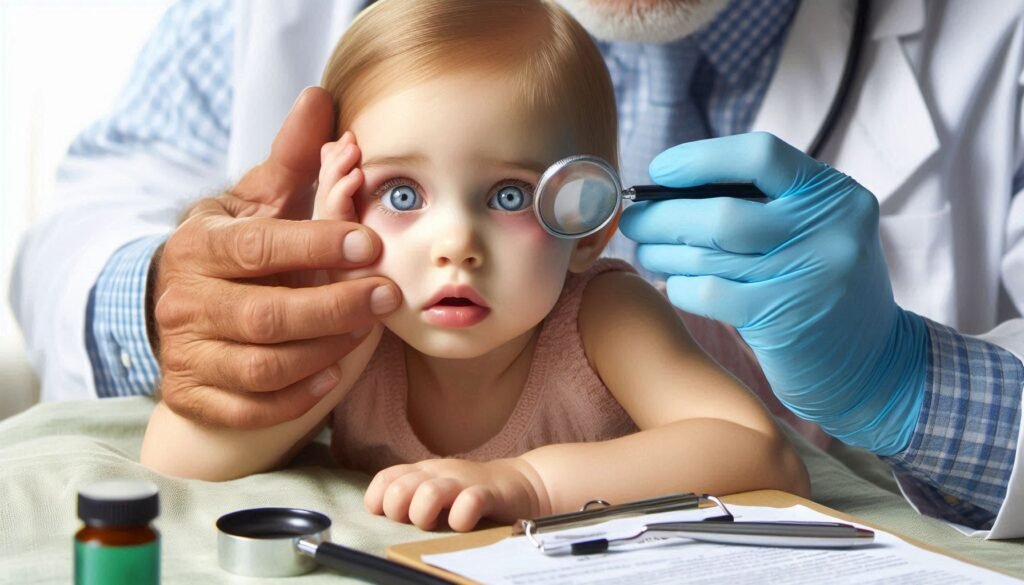Aarskog–Scott Syndrome is a rare genetic disorder that affects both physical and intellectual development. While it may not be widely known, understanding this condition can help families navigate the complexities associated with it. Characterized by distinct facial features, skeletal abnormalities, and varying degrees of learning disabilities, Aarskog–Scott Syndrome presents unique challenges for those affected.
For parents and caregivers, being informed about the signs and symptoms is crucial in ensuring timely diagnosis and intervention. This blog post will delve into various aspects of Aarskog–Scott Syndrome— from its causes to effective treatment options available today. Whether you’re seeking information for yourself or a loved one, join us as we explore this intriguing syndrome further. With knowledge comes empowerment, allowing individuals to better manage their health journey while fostering awareness within communities.

Overview of Aarskog–Scott Syndrome
Aarskog–Scott Syndrome is a genetic disorder primarily caused by mutations in the FGD1 gene. This condition predominantly affects males, although there are rare cases where females can exhibit symptoms. First described in 1970, it has since been recognized for its distinct features and associated challenges.
“What Triggers Ulcerative Colitis Syndrome? Treatment Guide”
Individuals with Aarskog–Scott Syndrome often display unique facial characteristics such as widely spaced eyes, a broad forehead, and a prominent jawline. In addition to these physical traits, many also experience skeletal abnormalities like short stature and limb malformations. The severity of symptoms can vary significantly from person to person.
Cognitive development may also be impacted in those with this syndrome. Some individuals face learning difficulties or mild intellectual disabilities, while others may have average intelligence levels. Early diagnosis plays an essential role in managing these developmental concerns effectively.
While living with Aarskog–Scott Syndrome poses certain challenges, appropriate medical care and support can make a significant difference in quality of life. Families often benefit from connecting with healthcare professionals who specialize in genetic disorders for tailored guidance and resources.
Signs and Symptoms of Aarskog–Scott Syndrome
Aarskog–Scott Syndrome presents a range of signs and symptoms that can vary significantly from person to person. One of the most noticeable features is distinctive facial characteristics, including broad forehead, wide-set eyes, and a flat nasal bridge. These traits often become more apparent as children grow.
“Why Does Ulnar-Mammary Syndrome Affect Development?”
Another common symptom includes short stature, which may be accompanied by skeletal abnormalities such as brachydactyly (short fingers) or syndactyly (webbed fingers). Children with this syndrome might also experience developmental delays affecting their motor skills and speech.
Behavioral issues are not uncommon in individuals with Aarskog–Scott Syndrome. Many exhibit attention difficulties or learning challenges that require special educational support. These behavioral aspects can sometimes overshadow physical symptoms in older children and adults.
Additionally, some patients may face dental problems due to irregularities in tooth development or alignment. Regular check-ups with dental professionals can help manage these complications effectively while ensuring overall health is monitored throughout life.
Aarskog–Scott Syndrome in Adults
Aarskog–Scott Syndrome manifests differently in adults compared to children. In many cases, the features become less pronounced as individuals grow older, but some characteristics persist into adulthood. Adults with this syndrome may display distinct facial traits such as a broad forehead, prominent nose, and wide-set eyes.
“How Does Ulysses Syndrome Impact Migrants?”
Physical development varies significantly among affected individuals. Some adults experience mild short stature while others are of average height. Joint laxity and skeletal anomalies can also be present, leading to discomfort or limited mobility over time.
Psychosocial challenges may arise due to unique physical appearances and potential learning difficulties associated with Aarskog–Scott Syndrome. Adult males often face social stigmas that can affect their self-esteem and mental health; support systems play a crucial role in addressing these concerns.
“What Are The Signs of VACTERL Syndrome in Newborns?”
Furthermore, while many adults lead fulfilling lives with appropriate support and medical care, regular check-ups remain essential for managing any long-term complications associated with the condition. Awareness of Aarskog–Scott Syndrome in adult populations is vital for early intervention and improved quality of life.
Aarskog–Scott Syndrome in Childern
Aarskog–Scott Syndrome can manifest in children through a range of distinct signs and symptoms. These often become noticeable during infancy or early childhood. Common features include characteristic facial traits such as a broad forehead, widely spaced eyes, and a short nose with a flattened bridge. These physical attributes may vary in prominence from one child to another.

In addition to facial characteristics, growth delays are typical. Children with this syndrome may be shorter than their peers due to growth hormone deficiencies or other related issues. Developmental delays are also common, affecting motor skills and cognitive functions.
“Why Does Van der Woude Syndrome Cause Cleft Lip?”
Behavioral aspects should not be overlooked either; some children may exhibit social challenges or have difficulty with communication. This can lead to misunderstandings in social settings, requiring additional support from caregivers and educators.
Medical professionals emphasize the importance of early diagnosis for effective management of Aarskog–Scott Syndrome in children. Early intervention programs tailored to individual needs play a vital role in helping these kids thrive academically and socially while improving overall quality of life.
Is Aarskog-Scott syndrome fatal
Aarskog-Scott Syndrome is generally not considered fatal. Most individuals with this condition lead normal, healthy lives. However, the severity of symptoms can vary significantly from person to person. While many face physical and developmental challenges, these do not typically shorten lifespan.
The syndrome primarily affects growth and development rather than causing life-threatening complications directly. Some associated health issues may arise but are often manageable with appropriate medical care and intervention. Regular monitoring by healthcare professionals can help mitigate potential risks.
“How Does Variably Protean Syndrome Present?”
In some rare cases, severe heart defects or other serious health conditions might be present alongside Aarskog-Scott Syndrome, which could complicate matters further. These comorbidities require careful management to ensure a better quality of life for affected individuals.
Early diagnosis plays a critical role in addressing any complications that may arise over time. With timely treatment options available today, those diagnosed with Aarskog-Scott Syndrome can thrive despite their unique challenges.
Aarskog–Scott Syndrome Genetics and Mechanism
Aarskog–Scott Syndrome is primarily caused by mutations in the FGD1 gene, which plays a vital role in cellular signaling and development. This gene is located on the X chromosome, leading to an X-linked inheritance pattern. Males are more frequently affected due to having only one X chromosome, while females can be carriers with milder or no symptoms.
The FGD1 gene mutation disrupts normal protein function, which affects various biological processes during embryonic development. This disruption can lead to the characteristic features of Aarskog–Scott Syndrome such as facial dysmorphism and skeletal abnormalities. Understanding these genetic mechanisms provides insight into how this syndrome manifests.
Research indicates that not all individuals with FGD1 mutations will display severe symptoms; there’s variability in expression based on factors like gender and random X-chromosome inactivation in females.
Genetics also contributes to potential complications associated with Aarskog–Scott Syndrome. These may include issues related to heart defects or developmental delays, underscoring the importance of genetic counseling for affected families seeking support and information about their condition.
Aarskog–Scott Syndrome Diagnosis and Exams
Diagnosing Aarskog–Scott Syndrome typically involves a multi-faceted approach. Healthcare professionals usually start with a comprehensive medical history and physical examination. During this process, they will look for key signs associated with the syndrome, such as distinctive facial features or limb anomalies.
Genetic testing plays a crucial role in confirming the diagnosis. This testing can identify mutations in the FGD1 gene, which is commonly associated with Aarskog–Scott Syndrome. If symptoms are present but genetic tests return inconclusive results, further evaluations may be necessary.
Radiological exams like X-rays or MRIs might also be conducted to assess skeletal abnormalities that could indicate the syndrome’s presence. These imaging studies help doctors visualize any unusual growth patterns and structural differences in bones.
Additionally, specialists may collaborate to address various aspects of patient care. Pediatricians, geneticists, and orthopedic surgeons often work together to formulate an accurate diagnosis and tailor treatment plans accordingly. Early detection is vital for managing symptoms effectively and improving quality of life for those affected by Aarskog–Scott Syndrome.
Treatment Options
Treatment options for Aarskog–Scott Syndrome primarily focus on managing symptoms and improving quality of life. Since the syndrome manifests with various physical and developmental features, a multidisciplinary approach is often necessary. This may include pediatricians, geneticists, orthopedic specialists, speech therapists, and psychologists.
Physical therapy plays a crucial role in enhancing motor skills and overall mobility. Children may benefit from tailored exercises that improve strength and coordination while promoting independence in everyday activities. Regular assessments can help gauge progress and adapt strategies as needed.
For those experiencing emotional or behavioral challenges due to the syndrome’s effects, counseling services are essential. Mental health professionals can provide support to both patients and their families as they navigate social interactions and self-esteem issues.
In some cases, surgical interventions might be required to address specific anatomical abnormalities caused by Aarskog–Scott Syndrome. These procedures aim to correct deformities or improve functionality but should always be discussed thoroughly with healthcare providers before proceeding. The right combination of therapies ensures that each individual gets personalized care tailored to their unique needs.
Prognosis and Complications
The prognosis for individuals with Aarskog–Scott Syndrome varies widely. Many affected individuals lead normal, fulfilling lives and experience only mild symptoms. However, the degree of severity greatly influences their overall health and development. Early diagnosis and intervention can significantly improve outcomes.
Complications may arise due to associated features of the syndrome. Some patients might encounter dental issues or challenges related to skeletal abnormalities. These complications can affect mobility and general well-being if not addressed promptly.
Additionally, learning difficulties are observed in some children with Aarskog–Scott Syndrome. This aspect necessitates tailored educational support to help them thrive academically and socially.
Regular medical check-ups are essential for monitoring potential complications over time. With appropriate management strategies in place, many individuals will flourish despite any challenges presented by this rare genetic disorder.
Aarskog–Scott Syndrome Preventive Measures
Preventive measures for Aarskog–Scott Syndrome primarily focus on early detection and genetic counseling. If there is a family history of the syndrome, prospective parents may benefit from consulting a genetic counselor. This professional can help assess risks based on family genetics and provide tailored information about potential outcomes.
Prenatal testing options are available to identify certain genetic conditions during pregnancy. These tests can reveal whether an unborn child carries the genes associated with Aarskog–Scott Syndrome. Parents who learn of their child’s risk before birth can prepare themselves emotionally and logistically.
Awareness plays a crucial role in prevention too. Educating families about the signs and symptoms enables them to seek medical advice promptly if they notice developmental delays or physical anomalies in their child. Early intervention often leads to better management of symptoms.
Ongoing research into gene therapy offers hope for future preventive strategies, potentially addressing the underlying causes of Aarskog–Scott Syndrome at a molecular level. While current methods mainly focus on awareness and support, advancements in science could lead to more effective preventive approaches down the line.
Support Groups and Resources
Support groups play a vital role for individuals and families affected by Aarskog–Scott Syndrome. These communities provide a safe space to share experiences, challenges, and successes. Connecting with others who understand the condition can alleviate feelings of isolation.
Numerous online platforms exist where patients and caregivers can find valuable information. Websites such as the National Organization for Rare Disorders (NORD) offer resources tailored to those dealing with rare genetic conditions like Aarskog–Scott Syndrome. Here, you can access articles, research updates, and practical advice on managing symptoms.
Local support groups might also be available in your community or nearby areas. These gatherings allow members to meet face-to-face, fostering friendships and support networks that are essential during difficult times.
Additionally, leveraging social media channels can lead you to vibrant communities dedicated to raising awareness about this syndrome. Engaging in these discussions not only provides emotional backing but also helps disseminate knowledge about treatment options and ongoing research efforts aimed at improving lives impacted by Aarskog–Scott Syndrome.
Summary
Aarskog-Scott Syndrome, a rare genetic disorder primarily affecting males, can greatly benefit from timely diagnosis and treatment. Known for its distinct facial features, limb abnormalities and developmental delays, this syndrome may present differently in adults compared to children. It is important to continue providing support throughout the individual’s life. Complications may arise due to associated features of the disorder; however, early intervention and tailored management can help individuals lead healthy and fulfilling lives.

